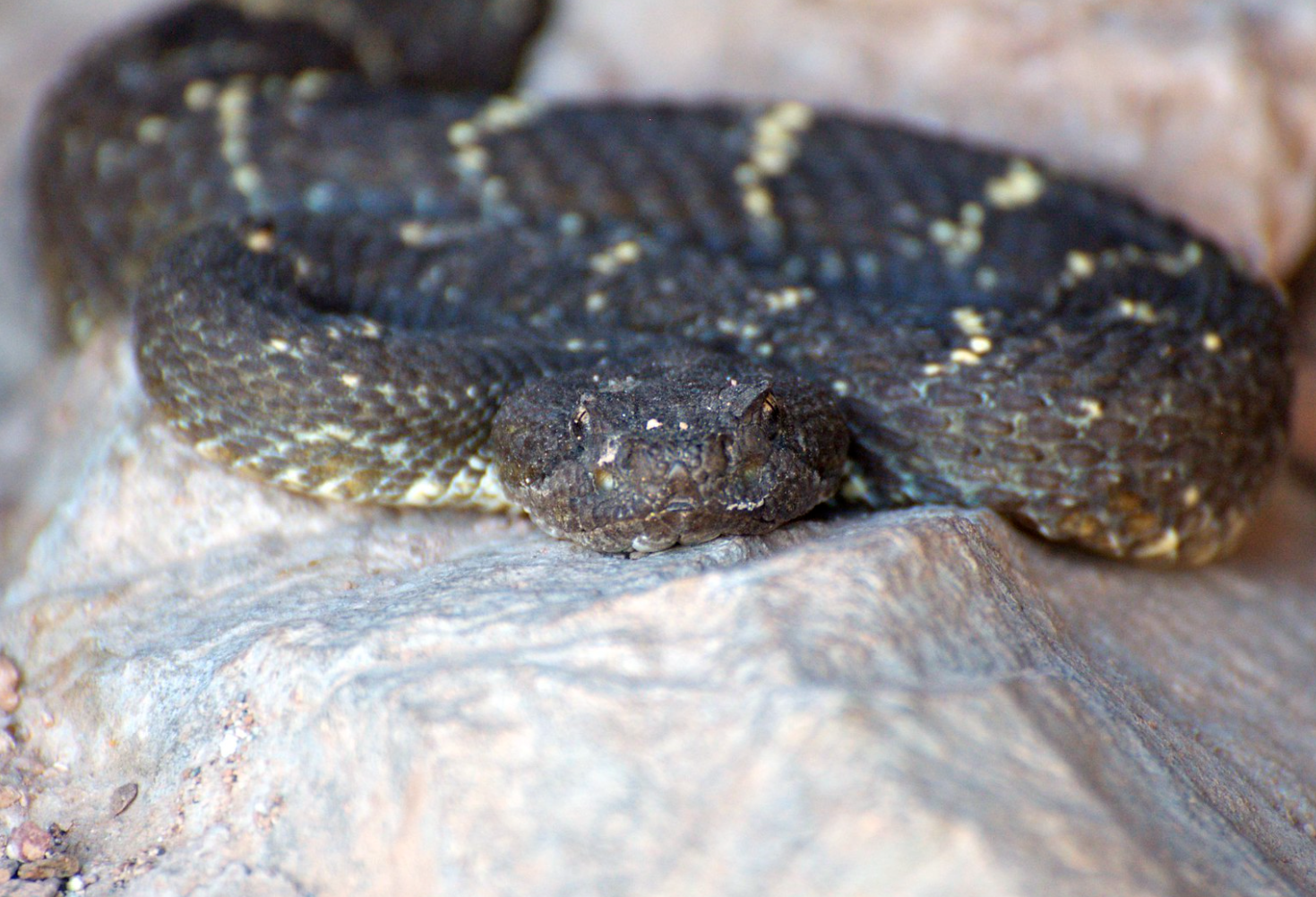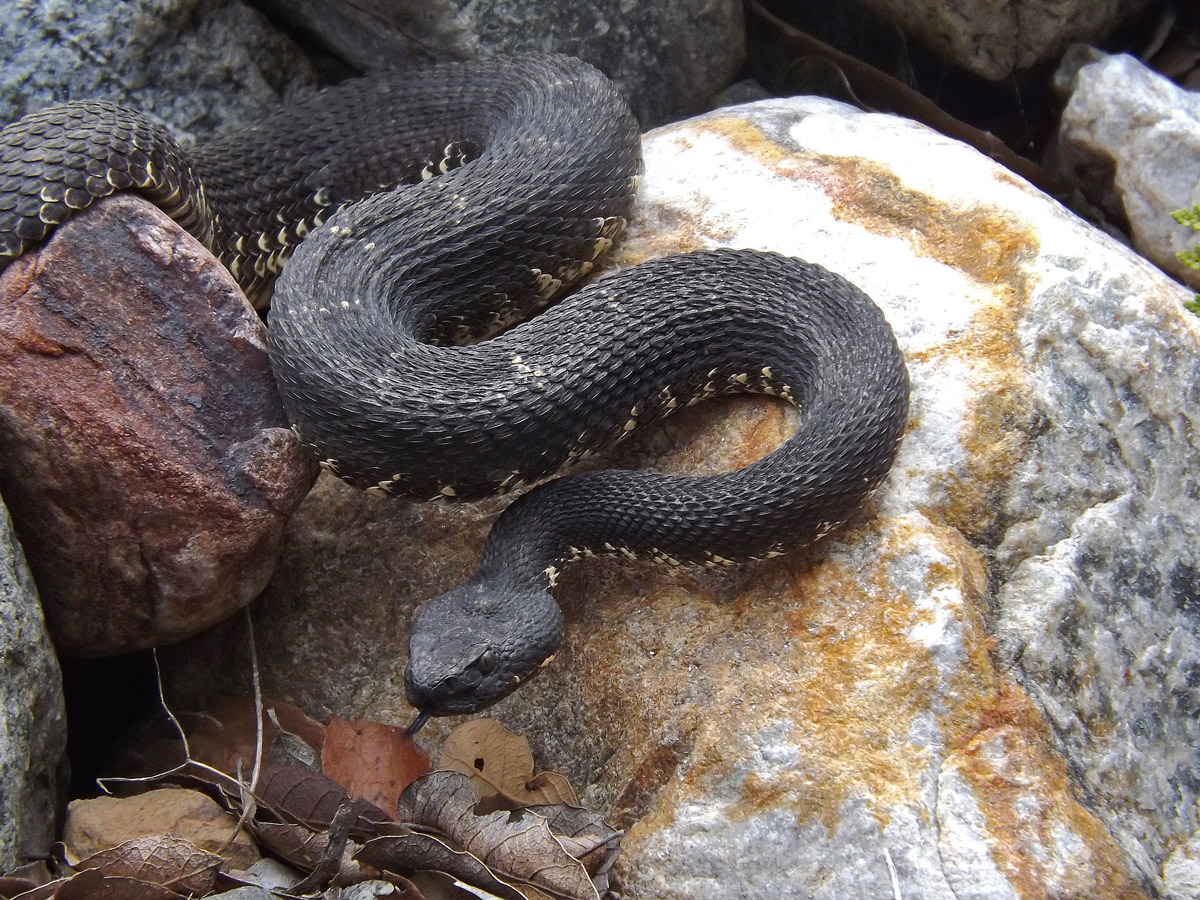Unveiling The Secret Identity: The Black Rattlesnake's Scientific Name Revealed!
For centuries, the black rattlesnake has been a source of fascination and fear for many. Its sleek, dark body and menacing rattle have made it a symbol of danger and power. But despite its fearsome reputation, the black rattlesnake is a fascinating creature that continues to capture the imagination of scientists and snake enthusiasts alike. In this article, we will delve into the world of herpetology and uncover the secret identity of the black rattlesnake, revealing its scientific name and the secrets behind its unique characteristics.
The black rattlesnake, also known as Crotalus adamanteus, is a member of the Viperidae family and is native to the southeastern United States. Its scientific name, Crotalus adamanteus, was first described by the French zoologist Mathurin Jacques Brisson in 1760. The name "Crotalus" is derived from the Greek word for "viper," while "adamanteus" refers to the snake's tough, steel-like scales.
What makes the black rattlesnake so unique?
The black rattlesnake is a subspecies of the eastern diamondback rattlesnake, and is characterized by its dark brown to black coloration and distinctive rattle. The rattle is made up of loose, dangling scales that vibrate to produce a loud, rattling sound when the snake is threatened. This unique adaptation serves as a warning to potential predators, signaling that the snake is venomous and not to be trifled with.
• Habitat and Distribution
The black rattlesnake is found in the southeastern United States, including states such as Alabama, Florida, Georgia, and South Carolina.
• Diet and Hunting Habits
The black rattlesnake is a carnivore and feeds on small mammals, birds, and reptiles.
• Reproduction and Life Cycle
The black rattlesnake is oviparous, laying eggs in late spring and early summer.
The Biology of the Black Rattlesnake
The black rattlesnake is a fascinating creature, with a unique biology that sets it apart from other species of snakes. In this section, we will explore the biology of the black rattlesnake, including its anatomy, physiology, and behavior.
Anatomy of the Black Rattlesnake
The black rattlesnake has a distinctive anatomy that is adapted for its venomous lifestyle. Its body is elongated and slender, with a broad, flat head and a long, narrow tail. The snake's scales are tough and scaly, providing protection from predators and the environment.
Scales and Skin
The black rattlesnake's scales are made of keratin, the same protein that makes up human hair and nails. The scales are overlapping and provide excellent protection from the elements and potential predators.
Venom Production
The black rattlesnake's venom is produced in glands located in its rear body. The venom is a complex mixture of enzymes and toxins that are delivered through the snake's fangs.
Respiratory System
The black rattlesnake's respiratory system is adapted for its underground lifestyle. Its lungs are small and efficient, allowing it to conserve oxygen and survive in low-oxygen environments.
Conservation Status of the Black Rattlesnake
The black rattlesnake is listed as "Least Concern" on the IUCN Red List, but its population is declining in some areas due to habitat loss and fragmentation. In this section, we will explore the conservation status of the black rattlesnake and what can be done to protect this fascinating species.
Habitat Loss and Fragmentation
The black rattlesnake's habitat is being fragmented due to urbanization and agriculture. This has resulted in the loss of habitat and reduced connectivity between populations.
Threats to the Black Rattlesnake
The black rattlesnake is threatened by habitat loss and fragmentation, as well as climate change and the introduction of invasive species.
Conservation Efforts
Conservation efforts are underway to protect the black rattlesnake and its habitat. These efforts include habitat restoration, research, and education programs.
Research on the Black Rattlesnake
Research on the black rattlesnake is ongoing, with scientists studying its behavior, ecology, and conservation status. In this section, we will explore some of the recent research on the black rattlesnake.
Behavior and Ecology
Scientists are studying the behavior and ecology of the black rattlesnake, including its diet, habitat, and mating habits.
Research Methods
Research on the black rattlesnake is typically conducted using non-invasive methods, such as camera traps and sensors.
Study Findings
Recent studies have found that the black rattlesnake is a complex and fascinating species, with a unique set of adaptations and behaviors.
Conclusion
The black rattlesnake is a fascinating creature, with a unique biology and ecology that sets it apart from other species of snakes. By understanding the biology and conservation status of the black rattlesnake, we can work to protect this incredible species and preserve its place in the natural world.
Key Takeaways
• The black rattlesnake is a member of the Viperidae family and is native to the southeastern United States.
• The black rattlesnake's scientific name is Crotalus adamanteus.
• The black rattlesnake is a venomous species with a unique adaptation that serves as a warning to potential predators.
• The black rattlesnake is listed as "Least Concern" on the IUCN Red List, but its population is declining in some areas due to habitat loss and fragmentation.
Keri Russell Kurt Russell
Tell Me Atory Kpkuang
The Prophecy Taylorwift
Article Recommendations
- Christian Keyes Father
- Alma Powell Cause Ofeath
- Chloandmatt Fans
- Brooke Monkd
- Prince Naseem Piddy
- Leland Chapman
- Nancy Mckeon
- Vanessa Bryant Ozempic
- Salena Zito Husband
- Micah Richards Wifeophie



